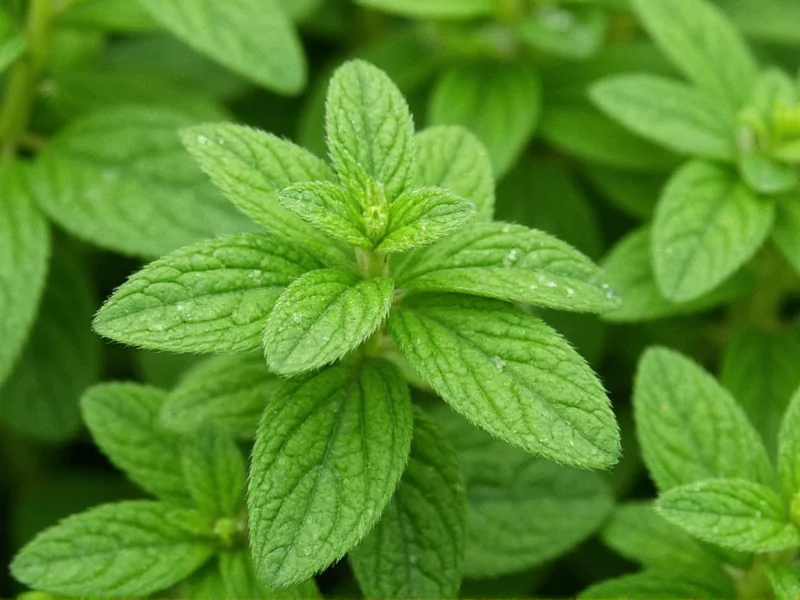When exploring the world of Mediterranean herbs, many home cooks and gardening enthusiasts encounter confusion between marjoram and oregano. Despite their botanical kinship and similar appearances, these herbs possess distinct characteristics that affect their culinary applications and growing requirements.
Botanical Relationship Explained
Both herbs belong to the Origanum genus within the Lamiaceae (mint) family, but they're separate species with different scientific classifications. Marjoram (Origanum majorana) is sometimes called "sweet marjoram" to distinguish it from other varieties, while common oregano refers to Origanum vulgare. This botanical relationship explains their visual similarities but doesn't make them interchangeable in all recipes.
Visual and Flavor Comparison
The most reliable way to distinguish between these herbs involves examining both appearance and taste:
| Characteristic | Marjoram | Oregano |
|---|---|---|
| Leaf Shape | Small, oval, velvety leaves | Rounder, slightly hairy leaves |
| Stem Color | Purple-tinged when mature | Woody and brownish |
| Flavor Profile | Sweet, floral, with citrus notes | Pungent, earthy, with peppery finish |
| Intensity | Milder (use more generously) | Stronger (use sparingly) |
Culinary Applications Compared
Understanding the difference between marjoram and oregano proves essential for recipe success. Marjoram's delicate flavor works best in dishes where subtlety matters:
- Excellent in vegetable dishes, especially roasted carrots and zucchini
- Ideal for poultry seasoning blends and stuffings
- Perfect for light tomato sauces and salad dressings
- Common in German and Scandinavian cuisines
Oregano's bolder character shines in heartier preparations:
- Essential in Italian tomato sauces and pizza toppings
- Key component in Greek seasoning blends
- Ideal for grilled meats and robust vegetable dishes
- Traditional in Mexican mole sauces
Substitution Guidance
When considering whether you can substitute marjoram for oregano (or vice versa), remember these practical guidelines:
If replacing oregano with marjoram, use 1.5 times the amount called for, as marjoram's flavor is more delicate. This works well in tomato-based dishes where you want a gentler herbal note. Conversely, when substituting oregano for marjoram, use only half the quantity to prevent overpowering the dish. This substitution works better in heartier recipes like grilled meats or bean dishes.
For authentic Mediterranean cooking, understanding marjoram vs oregano flavor differences ensures your dishes maintain their intended character. While they share some chemical compounds like carvacrol, oregano contains higher concentrations, explaining its more assertive taste.
Growing Characteristics
Gardeners often wonder about the difference between marjoram and oregano plants. Marjoram typically grows as a tender perennial in USDA zones 7-9, preferring warmer temperatures and struggling in cold conditions. It reaches 12-18 inches in height with a bushy growth habit.
Oregano proves more resilient, thriving as a hardy perennial in zones 3-10. It grows taller (18-24 inches) and spreads more aggressively. When cultivating sweet marjoram versus common oregano, note that marjoram requires more consistent moisture while oregano tolerates drier conditions.
Common Misconceptions Clarified
One persistent myth suggests that marjoram is simply young oregano. This misunderstanding likely stems from their botanical relationship and similar appearances. However, they remain distinct species with different genetic profiles. Another misconception claims they're interchangeable in all recipes, which ignores their significant flavor differences.
When examining the question is sweet marjoram the same as oregano, the answer remains clear: while related, they offer unique culinary properties that affect dish outcomes. Professional chefs consistently select between these herbs based on specific recipe requirements rather than treating them as equivalents.
Frequently Asked Questions
Can I use marjoram instead of oregano in pizza sauce?
While possible, marjoram creates a noticeably different flavor profile in pizza sauce. Use 1.5 times the amount of marjoram if substituting for oregano, but expect a sweeter, less robust sauce. Traditional Neapolitan pizza recipes specifically call for oregano for its characteristic earthy notes.
Which herb has more health benefits, marjoram or oregano?
Both herbs offer significant health benefits as members of the Origanum genus. Oregano contains higher concentrations of antioxidants and antimicrobial compounds, particularly in its wild varieties. Marjoram provides notable calming properties and is traditionally used to support digestion. Neither should replace medical treatment, but both contribute valuable phytonutrients to a healthy diet.
Why does my marjoram taste like oregano?
Several factors could cause marjoram to develop oregano-like flavor: growing conditions (particularly soil composition and sunlight exposure), harvesting at the wrong time (marjoram's flavor changes as it flowers), or possibly misidentification of the plant. True marjoram should never taste identical to oregano, though environmental stress can intensify its herbal notes.
Can I grow marjoram and oregano together?
Yes, you can grow marjoram and oregano together, but consider their different needs. Oregano spreads more aggressively and may dominate the space. Plant them at least 12 inches apart with marjoram in slightly richer soil. Remember that oregano tolerates drier conditions better than marjoram, which prefers consistent moisture. Growing both allows for direct comparison of their visual and aromatic differences.
Which herb preserves better, marjoram or oregano?
Oregano generally preserves better than marjoram due to its higher concentration of essential oils. When dried, oregano retains more of its flavor profile compared to marjoram, which loses some of its delicate floral notes. For long-term storage, freeze both herbs in oil for best flavor retention, but expect oregano to maintain potency longer in dried form. Fresh marjoram has a shorter shelf life than fresh oregano.











 浙公网安备
33010002000092号
浙公网安备
33010002000092号 浙B2-20120091-4
浙B2-20120091-4